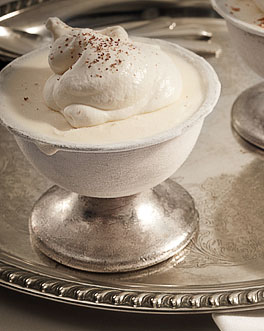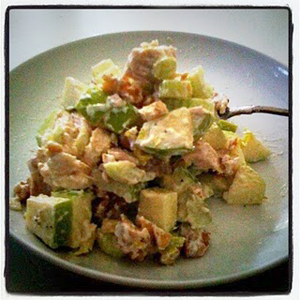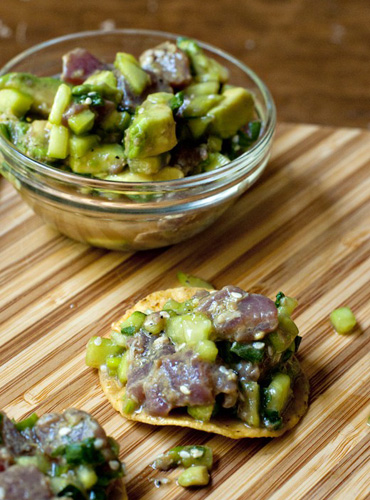 In 1919, after the end of World War I, Woodrow Wilson declared the first Armistice Day.
In 1919, after the end of World War I, Woodrow Wilson declared the first Armistice Day.
His mother, Jesse Woodrow Wilson, 1826-1888, wrote a handwritten recipe book. Among the recipes was one labeled - "Woodrow's favorite - Charlotte Russe" see below...
"Put in a kettle one ounce of gelatin, one quart of water, one-half pint of milk, one pound of sugar, yolks of four eggs and four spoons of sugar. When these ingredients are well mixed pour them upon yolks, and scald them -- stirring all the while; then strain it through a sieve ane pour it while hot on the four whites which must be beaten to a froth. Stir it constantly -- when it is cold, add a syllabub prepared as follows: One-half pint of cream, the remainder of the sugar, churn it, then lay it upon a sieve so that all the milk may drain out. Stir constantly until cold."

 The bounty from the berry bushes in my backyard has been great this year. I was able to make another quart of red currant jelly just like last year. The raspberry bushes yielded so much fruit that the options for consumption were unlimited. I wanted to make something more special than jam and it was impossible to eat all the berries fresh. I decided upon making a trifle, one of the most elegant and almost bake-free deserts. Instead of one big trifle, I made six individual trifles for a light dessert to end a recent summer gathering. These personal-size trifles are perfect for those who don't like to share dessert and since there are no seconds, they're guilt-free too.
The bounty from the berry bushes in my backyard has been great this year. I was able to make another quart of red currant jelly just like last year. The raspberry bushes yielded so much fruit that the options for consumption were unlimited. I wanted to make something more special than jam and it was impossible to eat all the berries fresh. I decided upon making a trifle, one of the most elegant and almost bake-free deserts. Instead of one big trifle, I made six individual trifles for a light dessert to end a recent summer gathering. These personal-size trifles are perfect for those who don't like to share dessert and since there are no seconds, they're guilt-free too. When a wine is described as "jammy" I always think of blackberries. Rich, ripe, fruity flavors so intense they almost taste more cooked than fresh. Blackberries, when fully ripe and sweet, not sour, taste like jam to me. Jammy also means "lucky" according to an Australian English dictionary I recently consulted. I think one slice of this cake will make you feel very lucky indeed! I certainly feel lucky to have gotten the berries from my friend Alton who brought them back from his mountain cabin hideaway, Shadow Woods.
When a wine is described as "jammy" I always think of blackberries. Rich, ripe, fruity flavors so intense they almost taste more cooked than fresh. Blackberries, when fully ripe and sweet, not sour, taste like jam to me. Jammy also means "lucky" according to an Australian English dictionary I recently consulted. I think one slice of this cake will make you feel very lucky indeed! I certainly feel lucky to have gotten the berries from my friend Alton who brought them back from his mountain cabin hideaway, Shadow Woods. As I was making my Shepherd's pie for our book club supper last night, I started to nibble thoughtfully on a celery stick and realized with quite an epiphany what a maligned and ignored vegetable the poor celery is. All due credit to Hugh Fearnley-Whittingstall who said, famously, "Celery is a bit like a gym membership." The crunch is the thing, isn't it? It's the minxy little crunch that gets you every time.
As I was making my Shepherd's pie for our book club supper last night, I started to nibble thoughtfully on a celery stick and realized with quite an epiphany what a maligned and ignored vegetable the poor celery is. All due credit to Hugh Fearnley-Whittingstall who said, famously, "Celery is a bit like a gym membership." The crunch is the thing, isn't it? It's the minxy little crunch that gets you every time. My son, Eli, and his friends took up fishing a few years back. He has an awesome fishing rod, but he has since retired it. He has replaced fishing for varsity football, work (yes, he works – in a restaurant), and girls. He is 16 1/2 after all! Although he has given up the sport, his friends haven’t. And every time his friend Owen catches something wonderful, he calls me up and asks if he and I can cook together.
My son, Eli, and his friends took up fishing a few years back. He has an awesome fishing rod, but he has since retired it. He has replaced fishing for varsity football, work (yes, he works – in a restaurant), and girls. He is 16 1/2 after all! Although he has given up the sport, his friends haven’t. And every time his friend Owen catches something wonderful, he calls me up and asks if he and I can cook together.